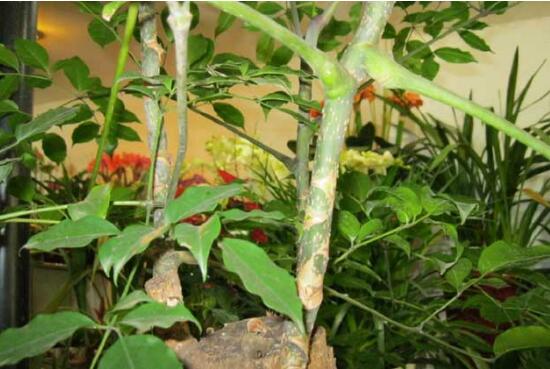How to water loose-tailed sunflower, simple four-season watering method (watering time / water quantity)
Everyone knows that plants need water to grow, so you should pay attention to watering any plant, and sunflower is no exception, so how to water sunflower is correct? Today, the editor is going to teach you how to water.
How to water loose-tailed sunflower

Watering loose-tailed sunflower adopts the principle of being dry and thoroughly watered. The so-called dryness means that when the basin soil is dry, it does not need to be watered too often; while wet penetration means that the top and bottom of the basin soil are wet, and the surface cannot be simply watered, but the root system at the bottom does not get water.
How often is the sunflower watered?
According to the principle of dryness and moisture penetration, combined with different growth stages and seasons, we can flexibly adjust the watering time, because planting plants is not a mathematical formula, so watering is not fixed for how long. But we can find general rules according to experience.
1. How to water the sunflower in spring
The temperature rises gradually in spring, and sunflower has just begun to grow again from the dormant period in winter, and it is not easy to water too much at this time. According to the weather conditions, water can be watered once every 2-3 days, which can be watered less in rainy weather and more in dry and muggy weather.
2. How to water the sunflower in summer
Summer is the season when sunflower has the highest demand for water, so it takes more time to water than other times, usually once a day or two. In order to maintain the humidity around the plant, we should spray more water at ordinary times, because the watering frequency is higher, so we should pay attention to the stagnant water in the basin.
3. Watering method in autumn
The temperature and climate in autumn are similar to those in spring, so watering is usually done every 2-3 days to keep the basin soil moist. The bottom of the basin can be observed when watering. If there is water flowing out from the bottom of the basin, the watering can be stopped, otherwise there will be stagnant water.
4. How to water the sunflower in winter
Winter is the season to pay special attention to watering, generally 4-5 days to water once, to keep the basin soil semi-dry and semi-wet, if it is rainy days to stop watering loose-tailed sunflower, to avoid root soaking in water and causing freezing damage.
Matters needing attention in watering loose-tailed sunflower
1. No stagnant water
Stagnant water will lead to poor ventilation in the roots, resulting in the roots of sunflower unable to absorb air, which is one of the main ways in which it absorbs nutrients, so stagnant water can cause a lot of growth and health problems.
2. It is best to use acidic water quality.
The acidity and basicity of each kind of water quality is different. Groundwater, river water or Rain Water are all acidic water, while tap water is alkaline water. If tap water is used for irrigation, black alum should be used to control the acidity of the soil in peacetime. Avoid soil alkalinity and affect the growth of sunflower.
How to water loose-tailed sunflower
Daily watering maintenance of loose-tailed sunflower
Sunflower likes a warm and humid environment, so we'd better keep the soil in the basin moist. Our daily watering should follow the principle of "dry and wet", must not be half dry and half wet, watering must be thoroughly watered so that the roots of sunflower are nourished by water. Although loose-tailed sunflower likes a wet environment, we should not overwater it, resulting in stagnant water in the basin, which will lead to rotting roots.
Summer watering
Summer is generally hot and dry, so summer can be watered more appropriately. In summer, not only the weather is hot, the water of sunflower evaporates quickly, but also summer is the season when sunflower grows vigorously, and the water demand increases accordingly. So in summer, we can water the sunflower twice a day. In addition, when the weather is too hot, we should spray water around the leaves of the sunflower plant. Keep the humidity in the air. The amount and frequency of watering should be determined according to the climate at that time and the humidity of the soil in the basin, and there is no need to copy the formula.
Winter watering
The weather is relatively cold in winter, the evaporation rate of water becomes lower accordingly, and sunflower grows relatively slowly in winter, so it is not necessary to pour too much water to sunflower in winter. Especially in the low temperature and rainy season, you must not water more, and even do a good job of drainage. In winter, you can wipe the leaves of loose-tailed sunflower, which can not only make it as bright and clean as new, but also increase humidity and give it proper moisture.
Master watering skills to ensure healthy growth how to water loose-tailed sunflower
How to water the loose-tailed sunflower? Watering plants, in fact, is also a science, not every day watering, sunflower can grow healthily and beautifully. Therefore, this paper intends to introduce the watering principles, methods and matters needing attention of loose-tail sunflower.
Perhaps it is the beautiful form of sunflower that attracts a lot of friends, so that it can enter the house and become a guest at home.
Reproduction method
The seeds of loose-tailed sunflower are not easy to be collected in China, and they are usually propagated separately. Ramet propagation is usually carried out in April in combination with changing pots. Select the plant with more tillers at the base, remove part of the old soil, divide it into several clumps from the junction of the base with a knife, each clump must have 2-3 plants, and retain the complete root system. After planting, put it in a warm environment with high humidity, and often spray water to facilitate the restoration of growth.
Soil
It is suitable to grow in the soil with good drainage and rich in humus, and can be mixed with rotten leaf soil and peat soil with a small amount of river sand.
Light
It should be shaded by 50% in spring, summer and autumn, which can withstand the darker environment, but it is better to move to outdoor light regularly for a period of time.
Temperature
The cold tolerance is not strong and should be placed in a place with sufficient sunshine. The leaves turn yellow when the temperature is below 20 ℃, and the overwintering temperature should be kept above 10 ℃. If the temperature is lower than 5 ℃, the plants will suffer frost damage, resulting in death in winter and spring.
Humidity
Loose-tailed sunflower likes a humid climate, requiring the relative temperature of the air in the growing environment to be 70% to 80%. If the air relative humidity is too low, it will dry up the leaf tip. Water should be sprayed on the leaf surface and the surrounding environment 3 or 4 times a day throughout the growth period to increase air humidity. But stop watering after dormancy.
Watering
It is necessary to keep the basin soil moist in the peak growing season, and often spray water to the plants during the high temperature in summer to maintain high air humidity, but do not have stagnant water in the basin soil. The amount of watering should be controlled in autumn and winter to keep the basin soil dry and wet.
Fertilizer application
Apply a small amount of base fertilizer on the pot, May to October is the peak growing season, to provide sufficient fertility, usually once a week to apply mature liquid fertilizer or compound fertilizer, autumn and winter as little or no fertilization as possible.
Pruning and shaping
Because the loose-tailed sunflower is not resistant to strong pruning, usually only the withered, diseased and torn leaves are cut off and the withered leaf sheaths are removed. When the leaf tip is withered and yellow due to drying and other reasons, only the leaf tip can be cut, and the whole leaf does not need to be removed. Generally more winter pruning, in winter plants into dormancy or semi-dormant period, to thin, disease and insect pests, withered, too dense and other branches cut off.
Pest control
The common disease is leaf blight, but it is easy to occur diseases such as scale insects and red spiders in a dry or poorly ventilated environment for a long time. Leaf blight: prune the diseased branches in time at the onset of the disease, and the wound after pruning can be disinfected with Dakening ointment, and can also be sprayed with 1000 times of 75% chlorothalonil or 1000 times of thiophanate methyl, once every 7 to 10 days. Spray 3 times 4 times in a row. Scale insects and red spiders: can be regularly sprayed with omethoate 800 times solution to control.
There is a principle for watering loose-tailed sunflower, that is, the principle of dryness and moisture should be followed according to the season. In fact, this is also the principle of how to water many similar plants.
- Prev

How to raise loose-tailed sunflower, the breeding methods and matters needing attention / temperature control are very important.
As the efficacy and function of loose-tailed sunflower is very many, so it is often raised at home or in the office, so how can loose-tailed sunflower play its role? Today, the editor will share with you the breeding methods and points for attention of loose-tailed sunflower. Studies by botanists on how to raise sunflower show that
- Next

How to prune the happiness tree, the pruning method of the happiness tree is very important.
Happiness tree, a beautiful ornamental plant, grows very fast and grows luxuriantly without paying attention to it. And if we want to ensure the beauty of the happiness tree, like human hair, we have to prune it properly, then how to prune the happiness tree? In order for everyone to raise a beautiful happiness tree.
Related
- Fuxing push coffee new agricultural production and marketing class: lack of small-scale processing plants
- Jujube rice field leisure farm deep ploughing Yilan for five years to create a space for organic food and play
- Nongyu Farm-A trial of organic papaya for brave women with advanced technology
- Four points for attention in the prevention and control of diseases and insect pests of edible fungi
- How to add nutrient solution to Edible Fungi
- Is there any good way to control edible fungus mites?
- Open Inoculation Technology of Edible Fungi
- Is there any clever way to use fertilizer for edible fungus in winter?
- What agents are used to kill the pathogens of edible fungi in the mushroom shed?
- Rapid drying of Edible Fungi

